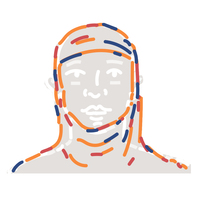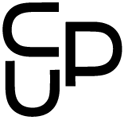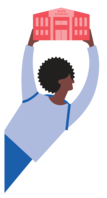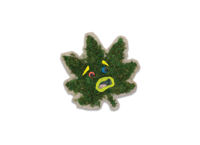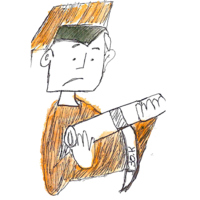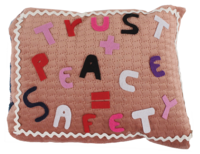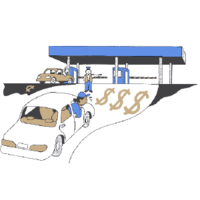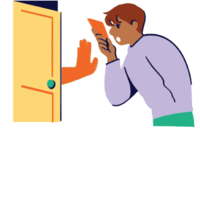Meet the Teaching Artist: Gabe Gordon!

For the first feature in CUP's series spotlighting our educational collaborators, Meet the Teaching Artist, we sat down with teaching artist Gabe Gordon!
Gabe grew up far-sighted in Cleveland, Ohio. Fascinated by postal systems and mail objects, Gabe's work and writing circulate around the art and politics of correspondence. As a Teaching Artist, Gabe has been lucky to work collaboratively on projects with children and teenagers of all ages across New York City, Western Massachusetts, and Detroit, Michigan. He first worked with CUP in 2016.
Why were you interested in becoming a Teaching Artist? When I initially applied to be a TA, I was fresh out of school and collaging several teaching gigs together in New York. I was already an admirer of CUP, but the opportunity jumped out at me because of CUP’s definition of what art and design education can look like. As an art teacher, I’m far less interested in instructing technical skills than I am encouraging artmaking as a toolkit for research and discovery. Not everyone has to see themselves as an artist to find themselves creatively engaged with a CUP project. I loved the idea of co-authoring, illustrating, and designing a resource that actually responded to an identified need.
When it comes to CUP’s mandate to use art and design to increase civic engagement, I think it’s important to understand that it’s not our fault we don’t understand how our cities, governments, and infrastructures work. In fact, that opacity is often quite intentional. Because of this country’s long, oppressive history of excluding populations from civic discourse, I think civic literacy is somewhat futile without civic action. But understanding the ways things work and teaching them to others is a path toward improving and changing them. CUP projects thrive at this juncture by building participatory tools that make the world around us more transparent, while simultaneously challenging the systems that these resources elucidate. This is exactly the kind of work I want to be a part of.
How would you describe your artistic practice? I see my practice as very project-based, and often very collaborative, even though my educational background is in the solitary art of painting. Working across mediums, with this foundation in painting and a particular fascination with the USPS, my personal work explores visual alternatives to popular mythologies, figures, and ideologies of nationhood and identity. Often using postage imagery and forms as vehicles for explorations into topics circulating sexual politics, homonationalism, and recently, labor history, my work navigates the tension between connectivity and loss, while highlighting the power of ephemera to act as geographical and temporal connectors.
I also work at the New Museum as a producer of IdeasCity, the museum’s roving curatorial platform for artists and projects engaged with the public realm. Like CUP, this initiative is located at the intersection of activism, urbanism, and design. I get to collaborate with all sorts of artists, architects, and community leaders who are creatively responding to conditions of urbanism across the globe on ambitious public art programs.
What is a project you’re working on now that you’re excited to reveal soon? Lately I have been talking to neighborhood letter carriers, whose union is broadly working to keep post offices from closing and services from privatizing across the country. 2020 is the 50th year of the Great Postal Worker Strike of 1970, the first and largest wildcat strike in US history. Nixon declared a national emergency and 8 days later the post office department became the USPS and the American Postal Workers Union amalgamated. On the occasion of this anniversary, I’m working on creating a series of “commemorative stamps” while considering how postal services and public sector labor have taken on new roles in an age of mass communication, white nationalism, and staggering economic inequality.
How did collaborating with CUP impact your work moving forward? CUP fostered new levels of curiosity and confidence within me that have propelled my personal and professional work forward in numerous ways. In addition to the skills I’ve harnessed as a teacher and designer, I think I’ve grown as an organizer, a project manager, an interviewer, a writer, and an overall community member. The CUP staff are role models for all of these skills, and have been consistently supportive during and beyond each project.
The first CUP project I did was about neighborhood rezoning in the Bronx, which really sparked my interest in understanding urban planning from a ground-up, community-first approach, not just through books, lectures, or museum exhibitions. I try to lean into all projects from this same angle.
Lastly, I’ve continued to seek out opportunities to work with more amazing young people. I deeply appreciate the inherent cynicism that teenagers possess, and don’t think adults give young people enough space to broadcast their critical thinking. I have learned so much about New York, a city I’m a transplant in, and the world in general from the students I’ve collaborated with.
What is your secret skill that has nothing to do with your art and educator work? I am debilitatingly farsighted. This isn’t exactly a skill, since it’s technically a visual disability, nor is it secret, since it means I have to wear super thick glasses that make my eyes appear magnified. For some creatures, like owls, being farsighted is a critical, advantageous skill. I like to think of it that way.




